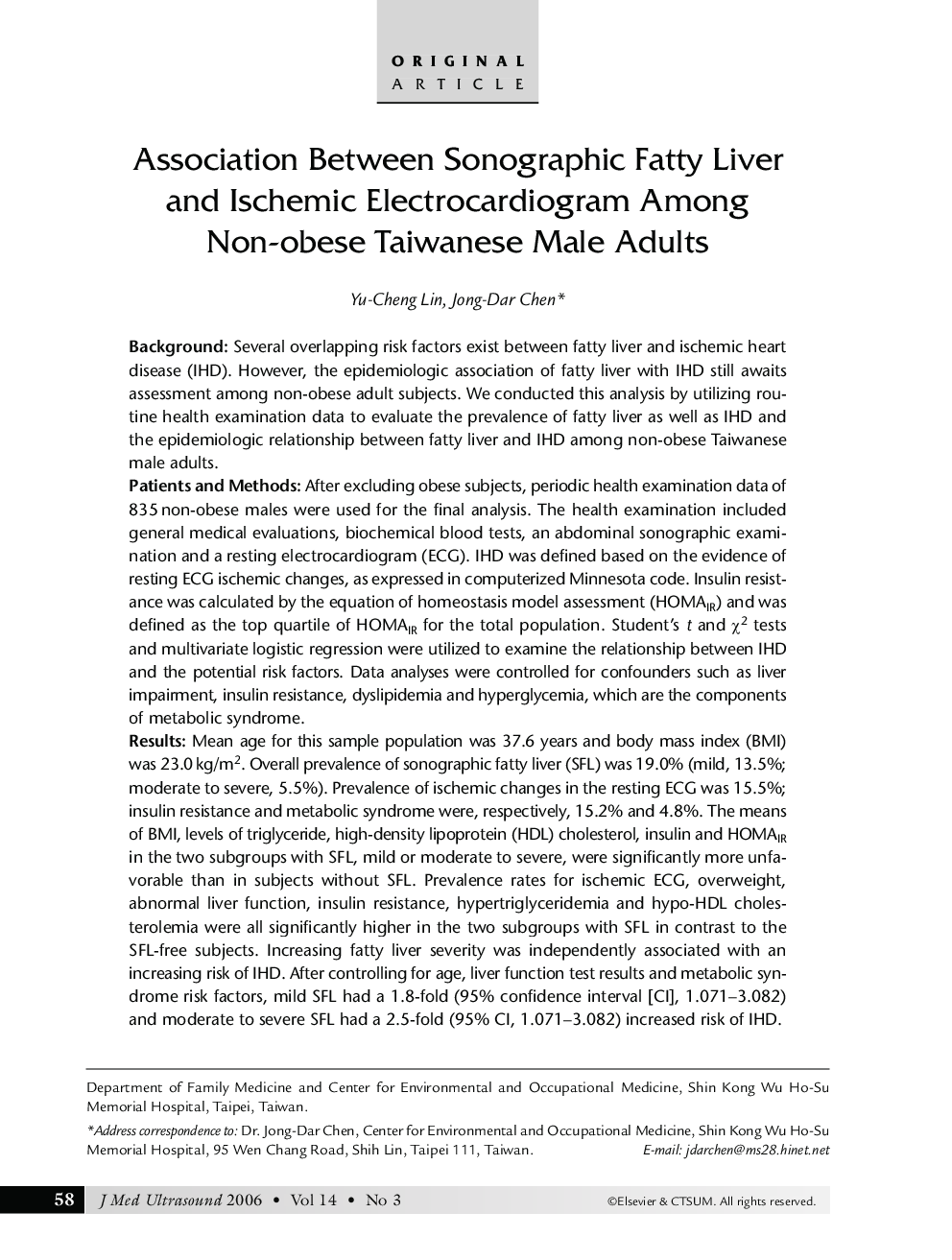| Article ID | Journal | Published Year | Pages | File Type |
|---|---|---|---|---|
| 4233407 | Journal of Medical Ultrasound | 2006 | 7 Pages |
BackgroundSeveral overlapping risk factors exist between fatty liver and ischemic heart disease (IHD). However, the epidemiologic association of fatty liver with IHD still awaits assessment among non-obese adult subjects. We conducted this analysis by utilizing routine health examination data to evaluate the prevalence of fatty liver as well as IHD and the epidemiologic relationship between fatty liver and IHD among non-obese Taiwanese male adults.Patients and MethodsAfter excluding obese subjects, periodic health examination data of 835 non-obese males were used for the final analysis. The health examination included general medical evaluations, biochemical blood tests, an abdominal sonographic examination and a resting electrocardiogram (ECG). IHD was defined based on the evidence of resting ECG ischemic changes, as expressed in computerized Minnesota code. Insulin resistance was calculated by the equation of homeostasis model assessment (HOMAIR) and was defined as the top quartile of HOMAIR for the total population. Student's t and χ2 tests and multivariate logistic regression were utilized to examine the relationship between IHD and the potential risk factors. Data analyses were controlled for confounders such as liver impairment, insulin resistance, dyslipidemia and hyperglycemia, which are the components of metabolic syndrome.ResultsMean age for this sample population was 37.6 years and body mass index (BMI) was 23.0 kg/m2. Overall prevalence of sonographic fatty liver (SFL) was 19.0% (mild, 13.5%; moderate to severe, 5.5%). Prevalence of ischemic changes in the resting ECG was 15.5%; insulin resistance and metabolic syndrome were, respectively, 15.2% and 4.8%. The means of BMI, levels of triglyceride, high-density lipoprotein (HDL) cholesterol, insulin and HOMAIR in the two subgroups with SFL, mild or moderate to severe, were significantly more unfavorable than in subjects without SFL. Prevalence rates for ischemic ECG, overweight, abnormal liver function, insulin resistance, hypertriglyceridemia and hypo-HDL cholesterolemia were all significantly higher in the two subgroups with SFL in contrast to the SFL-free subjects. Increasing fatty liver severity was independently associated with an increasing risk of IHD. After controlling for age, liver function test results and metabolic syndrome risk factors, mild SFL had a 1.8-fold (95% confidence interval [CI], 1.071—3.082) and moderate to severe SFL had a 2.5-fold (95% CI, 1.071—3.082) increased risk of IHD.ConclusionThe results of this study showed a statistically significant association between SFL and IHD among non-obese male adults. In addition to being a conventional liver status surveying equipment, sonogram evaluation for fatty change in liver provides valuable information about IHD risk assessment among non-obese Taiwanese male adults.
